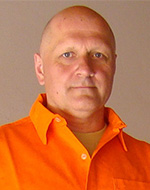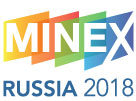- Home
- Viktor Kulikov

Viktor Kulikov
Chief geophysicist
Nord-West
Speaker profile
DATE OF BIRTH: June 20, 1967
EDUCATION:
1984 - 1991 Geological Department of Moscow State University
1996 PhD in Physico-mathematical sciences. Thesis title: “The influence of the deep conductive faults at the MTS results”.
2015 Doctor of Science (D.Sc) in geology and mineralogy. Thesis title: “Electrical technology at the stages of prospecting and evaluation ore deposits”.
PROFESSIONAL EXPERIENCE:
1995 - 2002. Leading Scientist, Moscow State University
2002 - 2017. Associate professor, Moscow State University, Geological Department
2017 - present Professor, Moscow State University, Geological Department
1995 - present Chief geophysicist, Nord-West Ltd
RESEARCH INTERESTS:
Electromagnetic induction and electrical conductivity
Electrical prospecting for mineral resources and hydrocarbon resources
Joint interpretation of geophysical data
HONOUR: EAGE (European Association of Geophysicists & Engineers) Member
Presentation summary
Modern electrical technologies for prospecting and exploration mineral deposits
The electrical survey is one of the most effective instruments for prospecting and exploration mineral deposits.
Compared to the practice of the 1960s–1980s, modern applications of the magnetotelluric (MT) technologies have significantly expanded. The possibility to apply the MT technologies in the mining exploration is due to such factors as: the introduction of the highfrequency modification of the MT method - the audiomagnetotelluric sounding (AMTS), substantially increased depth of investigation, the emergence of reliable, highly accurate and compact instruments and the significant progress in the methods of 2D/3D data interpretation.
2D electrical resistivity tomography (ERT) is an effective tool for the investigation of complex geoelectrical models. One of the most relevant objectives in ore electric exploration is coordination of the results of geometric direct current sounding (ERT) and magnetotelluric sounding (MT, AMT) by joint inversion.
ERT as a DC method is hypersensitive to resistive objects and makes it possible to determine more correctly boundaries of different intrusions, quartz core, dykes and other high-resistivity bodies. MT-parameters are more sensitive to conductive bodies and are not shielded by highly resistive layers.
Combination of ERT and AMT data makes it possible to solve a wide range of geological problems from direct search of ore bodies to revelation of indirect ore characteristics.
